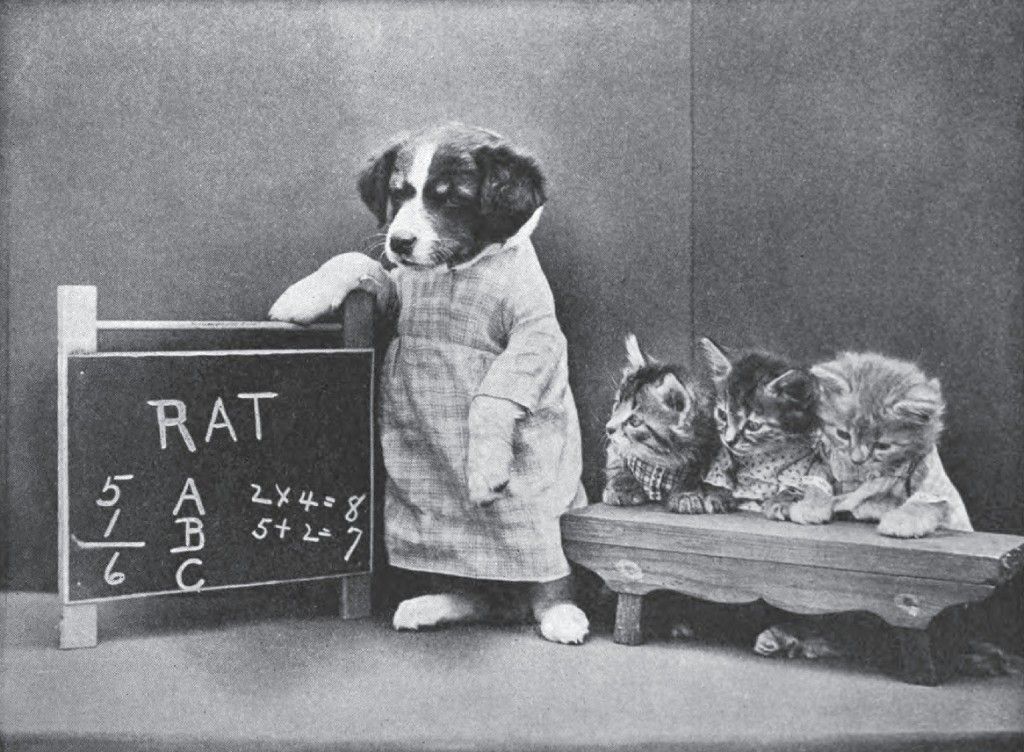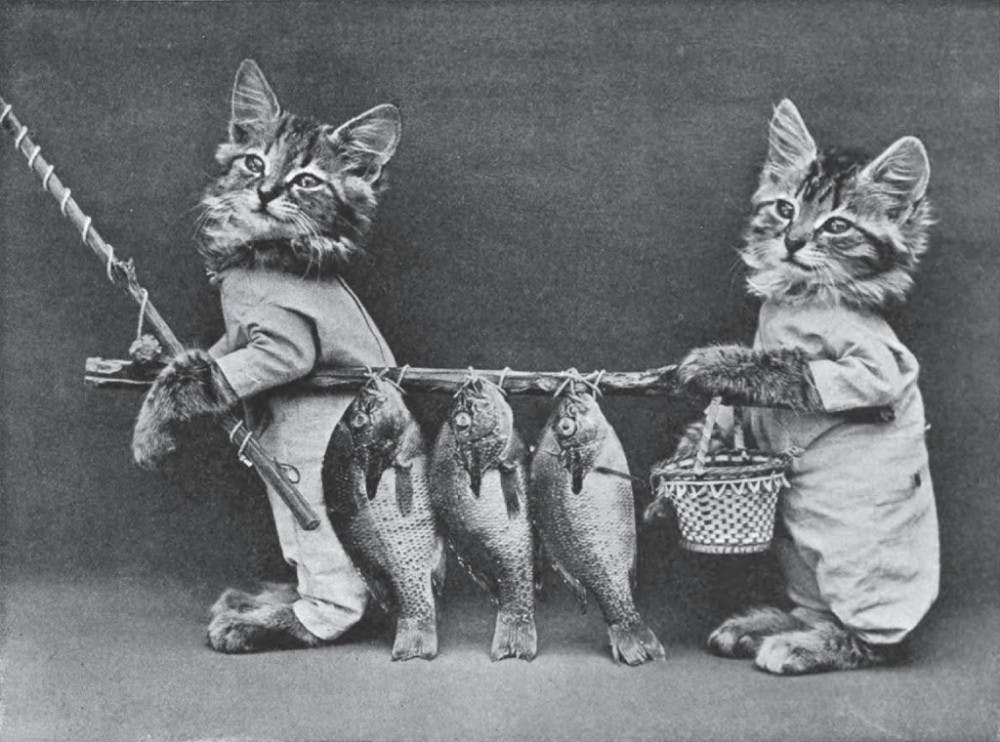Our fascination with these felicitous felines is a defining aspect of our time. Future historians will look back upon this time period and write theses and dissertations on the implications of this mad idolatry of cats in the peculiar years of the late 2000s and early 2010s.
Actually, no. The arrival of the Internet may be somewhat recent, but crazes about cats doing absurdly cute things are hardly new thanks to the life’s work of Harry Whittier Frees.
Born in 1879 in Pennsylvania, Frees lived in a time where the first photograph ever taken was a mere half century ago. Frees reportedly began his career in 1906 when he snapped a photo of a cat wearing a paper hat at a family birthday party. This picture was then turned into a postcard and was a huge success. Thus began Frees’s lifelong career of taking pictures of kittens and other young animals in cute human-like positions and putting them in calendars, postcards, magazines and children’s books.
As the popularity of Frees’s photographs grew, there was growing suspicion that these pictures were inauthentic. Prior to the invention of Photoshop, people started saying that these animals were possibly sedated or even taxidermy models. But Frees was legit. He would coax these animals to stay still in human positions for a fifth of a second (which is how long his exposures were) using an inhuman amount of patience. Then about two-thirds of the photos he took had to be discarded because taking photos in the early 1900s was a pretty unreliable process. The only help he ever received was from his housekeeper, Mrs. Annie Edelman, who sewed all the costumes.
Thus began Frees’s lifelong career of taking pictures of young animals in cute human-like positions...
In a 1937 Life magazine article describing his work, Frees said, “These unusual photographs of real animals were made possible only by patient, unfailing kindness of on the part of the photographer at all times.”
One of the more interesting things Frees published with all of these pictures were children’s books with backstories to the animal setups. Throughout his life he published more than five books featuring the life of adorable little animals in “Dogville” and “Pussyway Lane” (which sounds like a red-light district but is just a street for cats).
This entire experience kind of broke Frees. Dealing with fidgety live animals generated a lot of anxiety for him and as a result he only worked for about three months. He used the rest of the year to recover and plan out new ideas. The guy also had no life other than taking these pictures. He never married and lived through repeated periods of financial instability. Then after learning he had cancer in 1953, Frees took his own life. There was no reference to his photography work in his obituary.
The whimsical pictures Frees took are really good considering the time period he was working in. They are the progenitors for one of our biggest Internet phenomena. It is unfortunate that he died tragically and that much of his life’s work is forgotten. So please enjoy these photos that are from the archives of the Library of Congress. Although they were from the past and are more or less forgotten, as Alan Taylor of The Atlantic put it, “Their humor and appeal is timeless.”


















